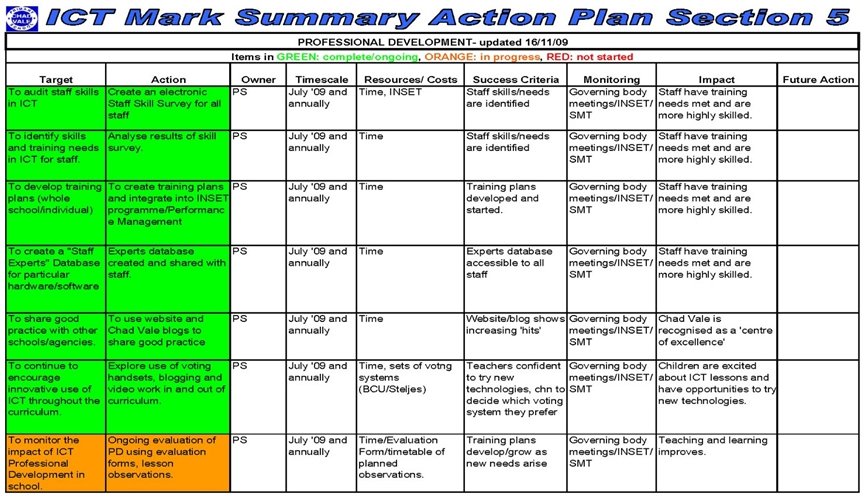Introduction
Professional development is very important in workforce. It enables co-workers to gain crucial skills paramount for success in their places of work (Balducchi et al, 2004). On top of this, professional development plans helps co-workers to grow professionally and execute the activities within their area of duty effectively. In addition, professional development motivates and changes the attitudes of co-workers (Mathews, et al, 2010).
This is because workers are competent to perform their roles without difficulties. This ensures that companies achieve a faster growth within a short period. This report is a one-year professional development plan in the automobile industry. The plan targets co-workers to increase awareness of local employers and partnership.
Awareness Strategies for Co-workers
The challenges that come with unprecedented technological advancement in the working environment require competent co-workers. Rapid changes call for knowledgeable and skilled labor force (Beers, 2007). Employees should have a strong partnership with their local employers.
On top of this, the workers should be flexible, adoptive, and focused on the goals of the enterprise or company in which they work. Employers should be in the forefront to ensure that their employees get the necessary training and encouragement for their development (Bissell and Dolan, 2012). Some of strategies to achieve partnership between employees and local employers are in the outline below.
Employee Development and Training
This is an initiative of employers for employees to access skills, interests, and enables workers to develop prowess in order to achieve employers’ set goal (Bissell and Dolan, 2012). Most of development plans should entail management development, supervisory skills, technical training, career development, basic, and professional skills as well as equipping them with computer literacy.
This will improve their competitiveness and update them to the very competitive ICT world. The table below shows the professional development plan for the Chad vale ICT which, is an international company in UK.

This plan will enable the local employers to equip and upgrade the skills of employees to work to their full potential. On top of this, employees will be in a position to deal with changing demands of the job.
Moreover, workers will have high morale, motivation, creativity, and career satisfaction (Farrell, and Fenwick, 2007). Further, training of co-workers will increase productivity and responsiveness in fulfilling objectives of companies.
Orientation This entails preparing co-workers for their jobs after recruitment team selects them. The co-workers are able to get basic information of their employers (Hughes & Cain, 2011). This is very important because it creates an important link between employees and their employers. The bond between the two parties forms a strong partnership, which is beneficial for the growth of industries or enterprises.
Orientation has a big potential to satisfy and improve their work output per annum. This is because the co-workers feel that they are in included in the organizations. After orientation, employers should assign seasoned employees to co-workers for mentoring purposes. This should encompass both the on and off-job mentoring programs (Stiglitz & Walsh, 2006). The overall effect of the mentoring program is to build a strong relationship among co-workers and employers.
Workplace Education This is a strategy to equip co-workers with essential skills, which are crucial in workplace. It is cognizant due to the fact that 21st century requires a skilled workforce, which is efficient, reliable, effective, and adaptable (Farrell, and Fenwick, 2007). The education program should encompass educating co-workers on their basic rights in the work environment.
On top of this, the education program should focus on the co-worker benefits such as health insurance for employees, retention programs, performance appraisals, and promotion benefits. Moreover, education programs should encourage co-workers to embrace diversity in order to interact smoothly with their fellow workmates and employers. This will create a strong partnership between co-workers and their local employers (Toyota Motor Manufacturing, Incorporated, 2012).
References
Balducchi, D., et al (2004). Labor Exchange Policy in the United States. Michigan: W.E. Upjohn Institute.
Beers, S. (2007). Strategies for Designing, Implementing, and Evaluating Professional Development. New York: ASCD.
Bissell G. and Dolan, P. (2012). Organisational Behaviour for Social Work. Bristol: The Policy Press.
Farrell, L. and Fenwick, T. (2007). World Yearbook of Education 2007: Educating the Global Workforce : Knowledge, Knowledge Work and Knowledge Workers. New York: Taylor & Francis.
Hughes, J. R. T., & Cain, L. P. (2011). American economic history. Boston: Addison-Wesley.
Mathews, S., et al (2010). Professional Development in Social Work: Complex Issues in Practice. New York: Taylor & Francis.
Stiglitz, J. E., & Walsh, C. E. (2006). Economics. New York: John Wiley & Sons.
Toyota Motor Manufacturing, Incorporated (2012). Web.